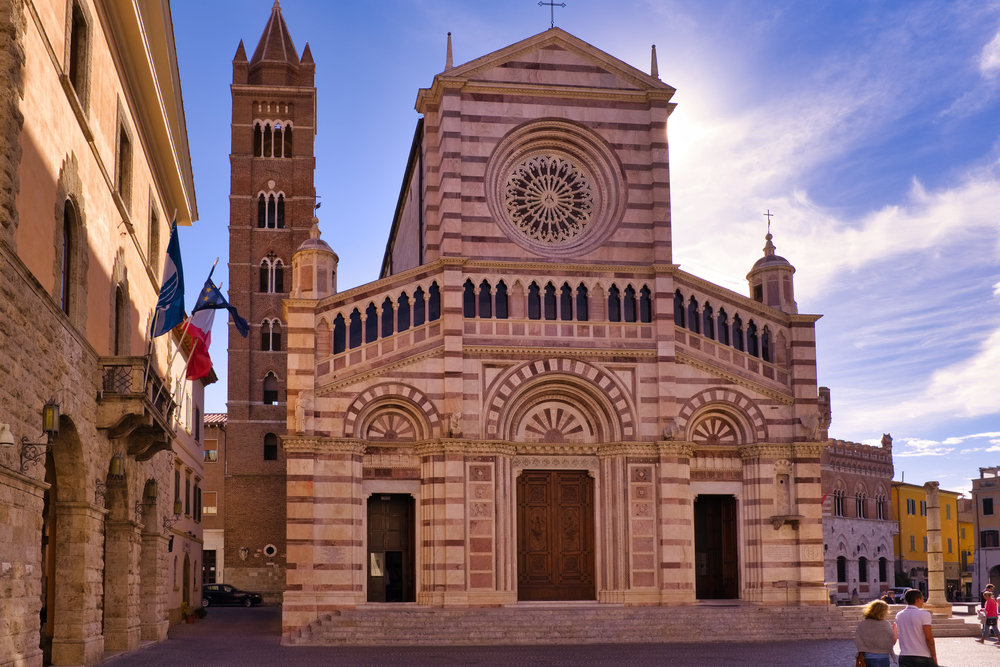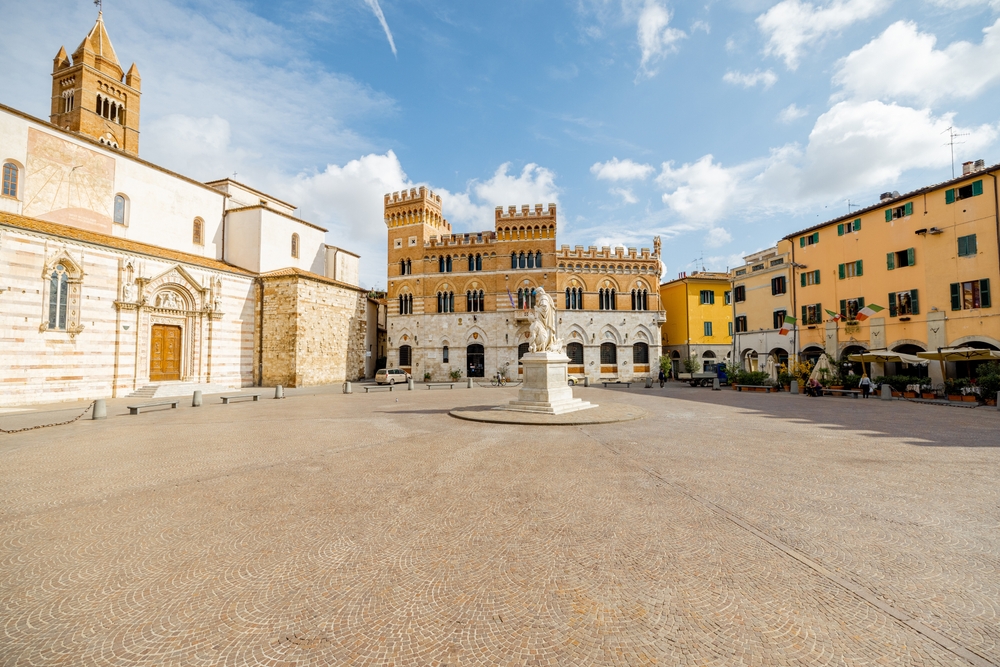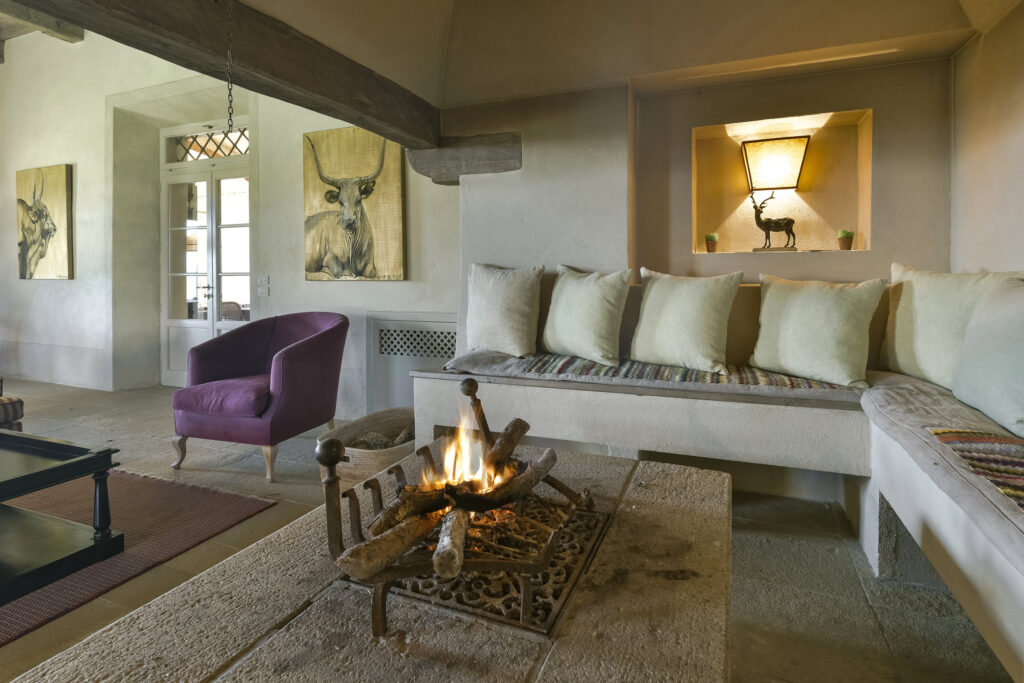Grosseto Travel Guide: Guide to Grosseto
Grosseto is a large city in Southern Tuscany and is the capital of the province that bears the same name. It’s also the most populous city in the Maremma region of Tuscany, home to over 80,000 inhabitants. It’s located just 14 km from the Tyrrhenian Sea. With so much to see and do we’ve put togetehr this Grosseto travel guide to help you have an unforgettable trip to this incredivle Tuscan city.
Unlike a number of Tuscan cities, Grosseto’s roots do not go as far back as the Etruscans. It was likely formed in Roman times as a garrison to guard the Via Aurelia. However, its history really dates from the Middle Ages onwards. Until then it remained small, not least because the coastal Maremma was usually flooded – either partially in the Summer months or fully during the Winter – meaning that the area was rife with mosquitoes. However, in the Middle Ages, after a period of Spanish rule, control passed to the Medici family in the 16th century when they kicked out the Sienese in 1559 following the battle of Montalcino. After this time, Grosseto’s hexagonal defensive walls were built by Cosimo I who was keen to protect the salt and grain stores of the city, and the marshes around the city were drained and road networks established. The walls still frame the city today and make a very pleasant tree-lined walk and public park.

More recently, a massive irrigation project was completed in the 1930s and Grosseto has since become a centre for Maremma’s rich agricultural industry. Not only that but the blight of cholera and maleria caused by the swamps has been driven out for good.
What to see and do in Grosetto
Sadly, in the 1940s, much of the outskirts of the city were destroyed or damaged during WWII. As a result, these days the city’s suburbs are arguably not worth a visit and holidaymakers visiting Tuscany often bypass Grosetto for that reason. However, the historic centre remains intact and is still rather charming. We think it’s definitely worth a visit, if only so that you can enjoy the chance to visit an authentic working town. With so much to see and do, we’ve chosen a few highlights for this Grosseto travel guide.
A good starting point for any visit to Grosetto is its central square – the Piazza Dante. Here you will find one of the city’s most notable buildings – the Romanesque Cathedral of San Lorenzo. The Cathedral has an elaborate pink and white marble facade. Its origins date back to the late 13th century but it has been rebuilt numerous times over the years. Head inside to marvel at the works of Matteo di Giovanni and the rather impressive baptismal font by Antonio Ghini.
At the very heart of the Piazza Dante is the Canapone monument, a sculpture by Luigi Magi. This is a sculpture of Leopold II of Lorraine who was the Grand Duke of Tuscany between 1824 and 1859. He was the last Austrian Hapsburg to rule Tuscany before he was deposed just before the unification of Italy and was generally well liked during his reign. The statue was erected in this spot in Spring 1846.

Other buildings of note in the Piazza Dante include the Palazzo Aldobrandeschi which currently serves as the provincial seat. This dates back to Medieval times but what you see today was almost entirely re-built in the 19th century neo-Gothic style.
Other buildings of note include the Church of San Francesco (a Beneductine monastery that was passed to the Franciscans) and the Church of San Pietro (the oldest religious institution in the city) whilst the Fortezza Medicea is the city’s ancient castle.
If you’re interested in history, then you should make a beeline for the Museum of Maremma Archaeology and Art in Grosseto, one of Tuscany’s best collections of Etruscan history. In fact, this museum is often the primary reason visitors come to Grosseto. This is full of artefacts stretching back from Etruscan to Medieval times. A number of the items on display here come from the tombs and necropoli of nearby Roselle. The latter is an incredible archeological park which sits in the hills north east of Grosseto. It was inhabited as far back as prehistoric times but became a prosperous Etruscan walled settlement in the 7th century BC.
If you enjoy the museum then definitely pay a visit to Roselle itself where you can clearly see original Etruscan walls along with the remains of a Roman amphitheatre and forum dating to the period after 294 BC when the Romans conquered Roselle. Incidentally, another archaeolgical site nearby also well worth visiting is near Vetulonia, 12 miles north east of Grosseto.
Grosseto is home to two other museums besides the Museum of Maremma Archaeology and Art. The Polo Culturale Le Clarisse is home to both a contemporary art space and the Gianfranco Luzzetti Museum which is a collection of artwork and sculptures that date from the 14th to the 19th centuries. And, last but not least, Grosseto is also home to the Natural History Museum of Maremma.
Day trips from Grosseto include to the nearby beaches. Head to the family friendly Marina di Grosseto or the Principina a Mare beaches. A short walk through the pine trees will take you to the sandy beaches beyond. And no visit to Grosseto would be complete without discovering the Natural Park of Maremma. This is an oasis of over 22,000 acres stretching from Principina a Mare to Talamone. It’s an incredibly unspoilt and untouched area of Mediterranean scrub, bordered by crystal clear seas and impeccably clean beaches.
Events in Grosseto
Grosseto plays host to two main annual events. On the evening of 9 August each year, there is a traditional procession in honour of the city’s patron saint, San Lorenzo. Oxen pull a cart through the streets accompanied by butteri (Maremma cowboys) on horseback. And Grosseto also plays host to an annual Game Fair every April. This is a 3 day event that centres around the outdoors and includes a variety of activities including shooting, hunting and horse riding.
Where to stay in Grosetto
Villa Serra is a beautiful 9 bedroom Tuscany villa rental near Grosetto. Or if you don’t need something quite that big, then Villa Gavorrano is a slightly smaller 7 bedroom Tuscany villa rental which is also just a 30 minute drive from Gavorrano. Both offer the best worlds – close to the best beaches in Tuscany but in the heart of rural Tuscany. These are just a couple of options for this Grosseto travel guide. Please do contact us or visit the main site if you would like to know about accomodation in Tuscany.

How to get to Grosetto
By car: Grosseto is easy to reach by car.
By train: Grosetto does have its own train station and is well connected to Italy’s capital city, Rome. The journey between the two will take around 90 to 120 minutes. There are also direct train connections with Pisa, Livorno and Siena. If coming from Florence, you will need to change trains at either Viareggio, Siena or Pisa to reach Grosetto. As always we would recommend using Trainline to book your tickets and reserve your seats.
By plane: Whilst there is an airport in Grosetto, this does not offer tourist flights. The nearest airport would be Pisa (90 minutes). Alternatively, Florence and Rome airports are both approximately 2 hours away.


